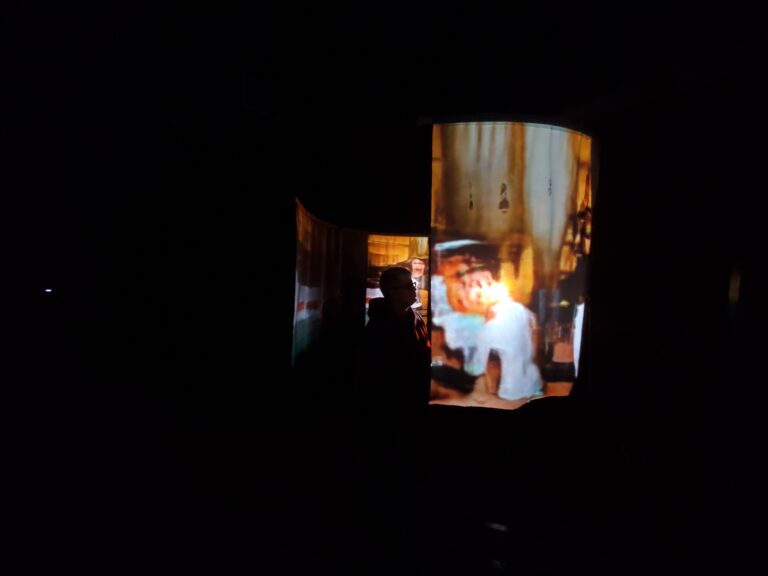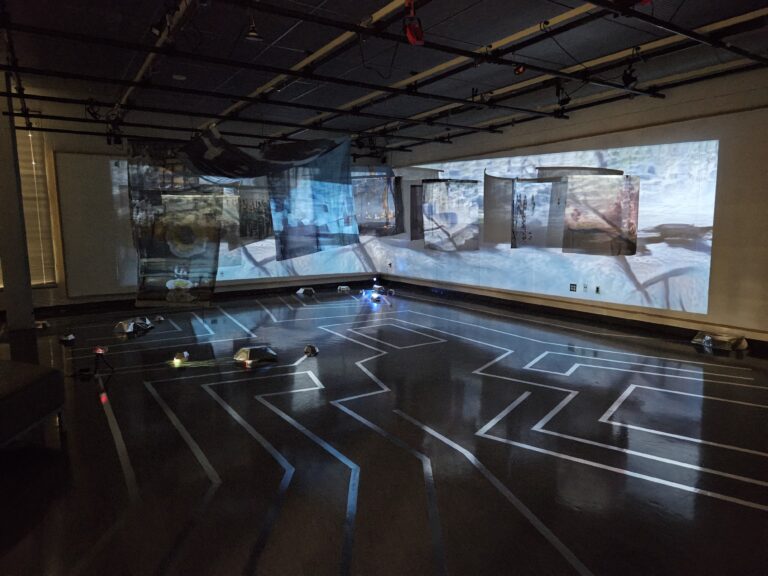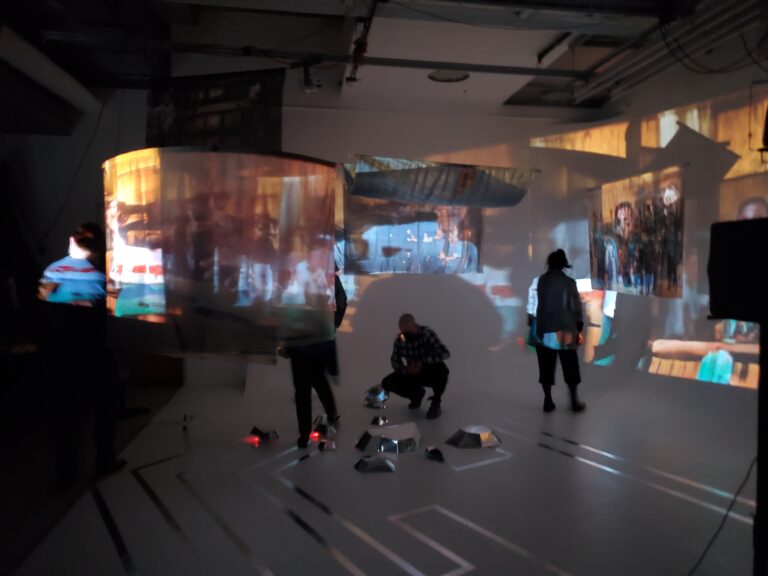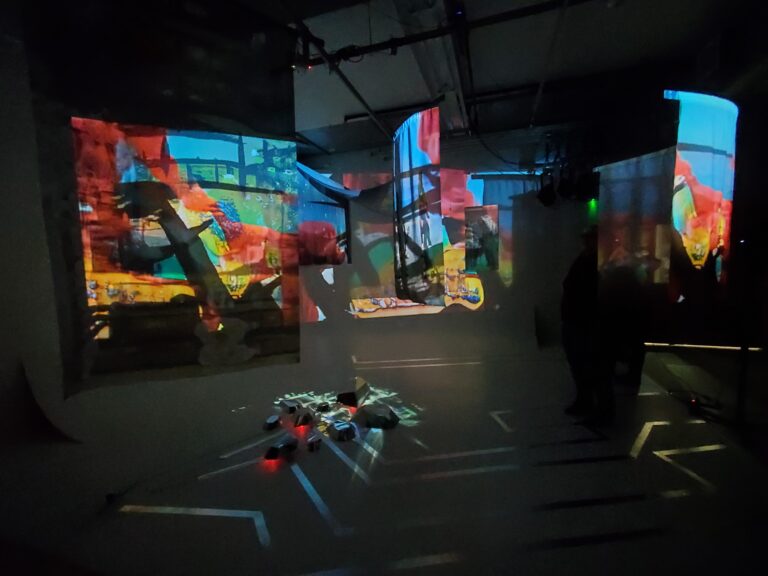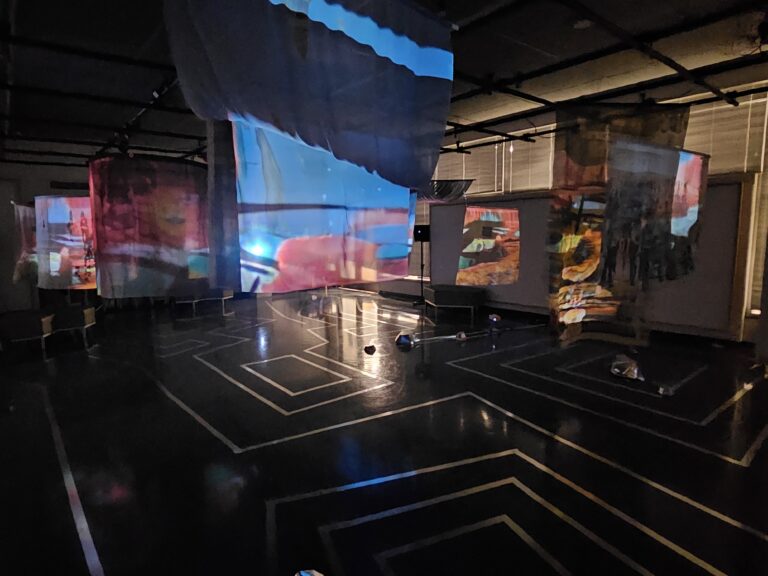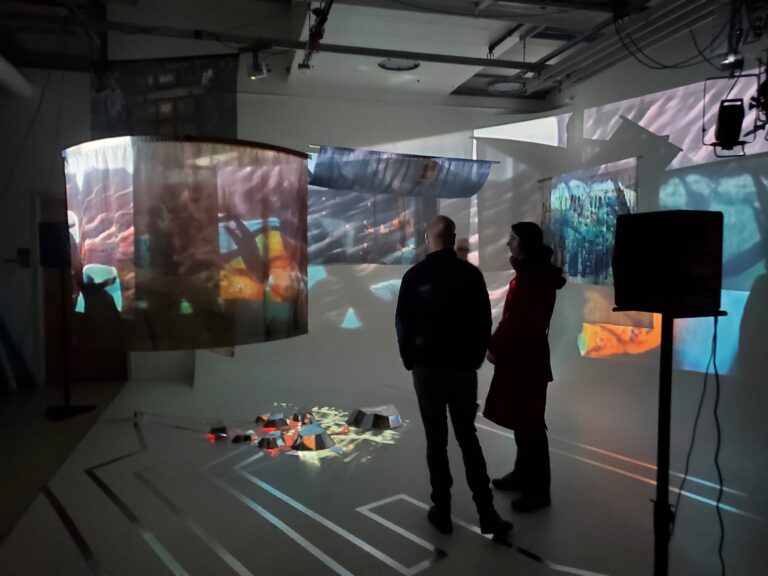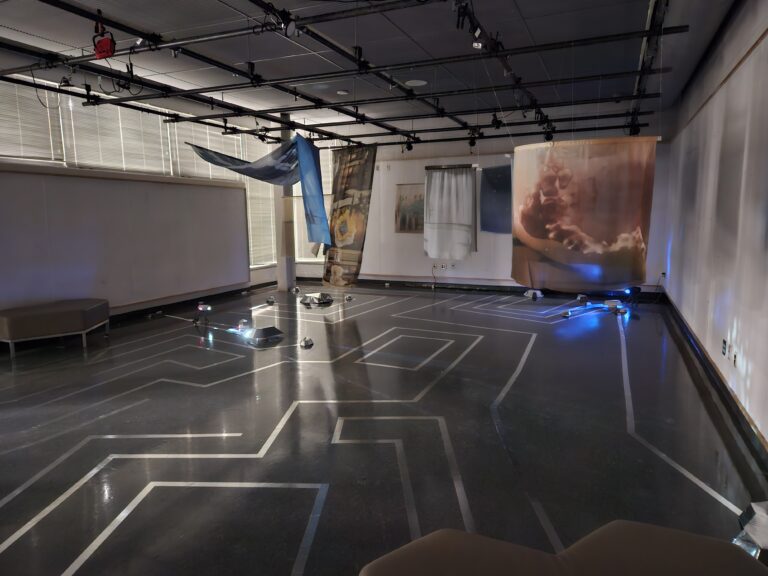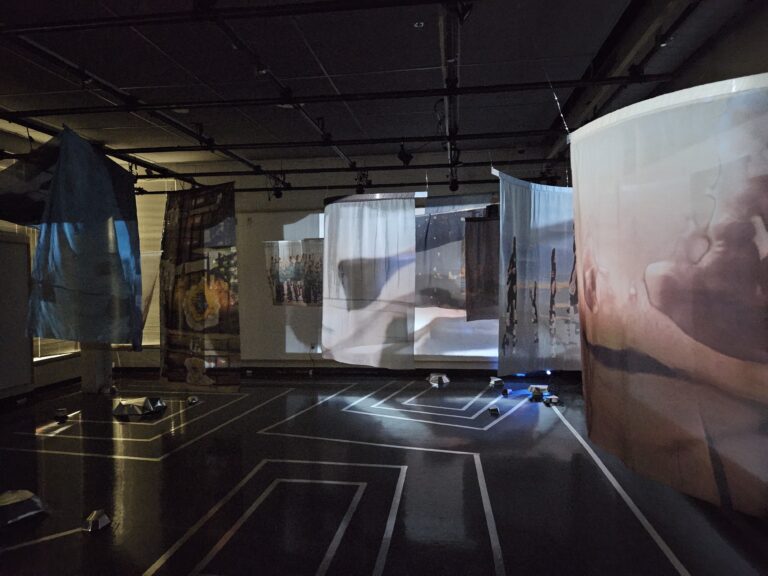Analytical Engine RAM, 2023. Digital prints on chiffon, 2-channel digital projection, 4-channel sound, mylar and rotating stands, foil tape. Variable dimensions.
I am interested in how our brains distort memories through neuroscientific processes, and the ways in which our technologies can mirror these human glitches and failures. I use a variety of visual distortions to relate to the distortion of our memories, becoming recontextualized as part of our repeated recollections.
This installation consists of projected, morphing abstract imagery, digital prints of these abstracted images on chiffon, mylar sculptures, an abstract soundscape made from the color data of the video, as well as the audio interpretations of the images by humans and artificial intelligence algorithms1.
For this project, I have trained a neural network, a type of artificial intelligence (AI) algorithm, on a set of images from my past to try and create new memories, shared between myself and my AI. I then used the images that were created from my dataset as training data for the neural network, in order to create a feedback loop to enhance the qualities inherent to the visual qualities created by the model.
I am also considering the tendency towards building our technology to mimic human experience– such as the ways we look to nature for pattern making (ie, using fibonacci numbers to create patterns in code, calling randomized numbers ”seeds” for our programs). The neural network that trained to generate these images uses a randomized noise field (which looks like static on a television screen) as the underlying structure for the image, and then draws out the images it generates through a machinic apophenia2, creating unnatural, blobby animations that look not natural, but have a wide possibility of interpretations.
Our embodied experience extends into the fourth dimension– a space expanded through our experience of time and virtuality through the internet.3 This is also what I am trying to create and consider: the spaces we experience when looking at a digital screen, and the spaces that we cannot see within the computer programs, and how we consider and interpret the past when situated in a different temporal and physical space.
1: An algorithm is a program that consists of a set of rules to solve a specific mathematical or other type of problem. Algorithms are still the base of all of our computer models, and the goal of how we approach computation- as problems to come to a concrete solution.
2: Apophenia: the tendency to perceive a connection or meaningful pattern between unrelated or random things (such as objects or ideas) (Merriam-Webster)
3: Laurence Scott, The Four-Dimensional Human
